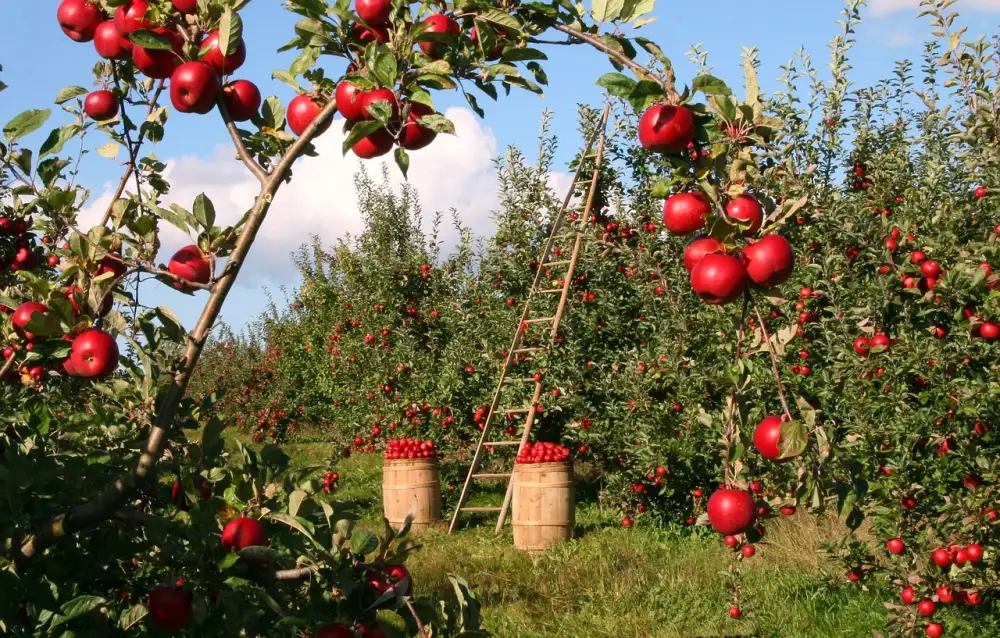Harvesting Rhubarb: Discover the Perfect Time to Gather Your Delicious Homegrown Bounty

Rhubarb, with its vibrant red stalks and tangy flavor, is a delightful addition to any kitchen. As spring arrives, it's time to turn our attention to the bountiful harvest of this versatile plant. Whether you've been growing rhubarb in your backyard or are considering starting your own patch, understanding the art of rhubarb harvesting is essential. In this article, we will explore the growth cycle of rhubarb, signs that indicate its readiness for harvest, and the best time to gather these delicious stalks. Get ready to embark on a journey of culinary bliss as we dive into the world of rhubarb harvesting!
Understanding Rhubarb Growth Cycle
Rhubarb is a perennial vegetable that goes through distinct growth stages throughout the year. It starts with the emergence of vibrant red stalks in early spring, followed by the development of large green leaves. During this time, the plant focuses on building up its energy reserves for future growth. As summer approaches, rhubarb enters its flowering stage, where it sends up tall flower stalks. However, it is important to remove these flower stalks promptly to prevent the plant from diverting its energy away from producing flavorful stalks. In late summer and early fall, rhubarb begins to go dormant, with leaves turning yellow and eventually dying back. This is a natural part of the growth cycle as the plant prepares for winter rest. Understanding these growth stages will help you determine when your rhubarb is ready for harvest and ensure you get the best-tasting stalks.
Signs of Rhubarb Readiness for Harvest
Before you can enjoy the tangy and delicious taste of rhubarb, it's important to know when it's ready to be harvested. Here are some signs to look out for:
1. Size and color: Mature rhubarb stalks should be thick and vibrant in color. They should measure around 10-15 inches in length and have a diameter of at least one inch.
2. Firmness: Gently squeeze the stalks to check their firmness. If they feel firm and sturdy, it's a good indication that they are ready for harvest.
3. Leaf development: Pay attention to the leaves of your rhubarb plant. When the leaves are fully developed and opened up, it's a sign that the stalks are mature enough to be harvested.
4. Time since planting: Typically, rhubarb plants should be allowed to grow undisturbed for at least two years before harvesting. This allows them to establish strong root systems and ensures better yields in the future.
By keeping an eye out for these signs, you can ensure that you harvest your rhubarb at its peak freshness and flavor. So get ready to indulge in the bountiful rewards of your hard work!
Best Time to Harvest Rhubarb Stalks
The best time to harvest rhubarb stalks is in the late spring or early summer, typically around April to June, depending on your location. It's important to wait until the plant is at least three years old before harvesting to ensure a healthy and sustainable crop. During this time, the stalks will be thick and vibrant in color, indicating their readiness for picking. Harvesting at the right time ensures that the stalks are tender and full of flavor, making them perfect for culinary delights.
How to Properly Harvest Rhubarb
To properly harvest rhubarb, follow these simple steps:
1. Start by selecting mature stalks that are at least 10-15 inches long and have a good diameter. Avoid harvesting young or thin stalks as they may not be fully developed.
2. Firmly grasp the base of the stalk near the ground and gently pull it away from the plant. Be careful not to damage any surrounding stalks or the crown of the plant.
3. Use a sharp knife or garden shears to cut off the leafy top of the stalk, leaving only the edible portion. The leaves contain toxic substances and should never be consumed.
4. Once harvested, rinse the stalks thoroughly under cold water to remove any dirt or debris.
Remember, it's important to leave some stalks on the plant during each harvest to allow for continued growth and replenishment. Aim to harvest no more than one-third of the plant's total stalks at a time.
By following these guidelines, you can ensure a bountiful and sustainable rhubarb harvest year after year. Enjoy your freshly picked rhubarb in a variety of delicious recipes!
Tips for Storing and Preserving Rhubarb
1. Refrigeration: To keep your rhubarb fresh for longer, wrap the stalks in a damp paper towel and store them in a plastic bag in the refrigerator. This will help maintain their moisture and crispness.
2. Freezing: If you have an abundance of rhubarb, consider freezing it for later use. Wash and chop the stalks into small pieces, then blanch them in boiling water for a minute before transferring to an ice bath. Drain well and pack into freezer-safe bags or containers.
3. Canning: Another option is to preserve rhubarb through canning. Prepare a simple syrup by dissolving sugar in water, then simmer the rhubarb in the syrup until tender. Pack the cooked rhubarb into sterilized jars, leaving some headspace, and process according to canning guidelines.
4. Rhubarb compote: Make a delicious compote by cooking chopped rhubarb with sugar and a splash of water until it softens. Let it cool before storing it in jars or containers. Use this tangy compote as a topping for pancakes, yogurt, or ice cream.
5. Rhubarb jam: Turn your rhubarb into a sweet jam that can be enjoyed year-round. Combine chopped rhubarb with sugar and lemon juice in a saucepan, then cook until thickened. Pour the hot jam into sterilized jars and seal tightly.
Remember to label your preserved rhubarb with the date to ensure freshness and use within one year for best quality. Enjoy these stored treasures when fresh rhubarb is not available!
(Note: The character count of this text is 698)
Now that you have successfully harvested your rhubarb, it's time to savor the delicious rewards. Whether you choose to bake a mouthwatering rhubarb pie, whip up a tangy rhubarb compote, or create a refreshing rhubarb cocktail, the possibilities are endless. The vibrant flavor and unique tartness of freshly harvested rhubarb will elevate any dish or dessert.
Remember to explore different recipes and experiment with various flavor combinations to truly appreciate the versatility of this incredible plant. From jams and jellies to sauces and syrups, there are countless ways to enjoy your homegrown bounty throughout the year.
So gather your family and friends, indulge in the culinary delights that rhubarb has to offer, and relish in the satisfaction of knowing that you played a part in nurturing this remarkable plant from seedling to harvest. Embrace the joy of sharing your homemade rhubarb creations with loved ones, creating memories that will last a lifetime.
Happy harvesting and bon appétit!
Published: 12. 12. 2023
Category: Food



